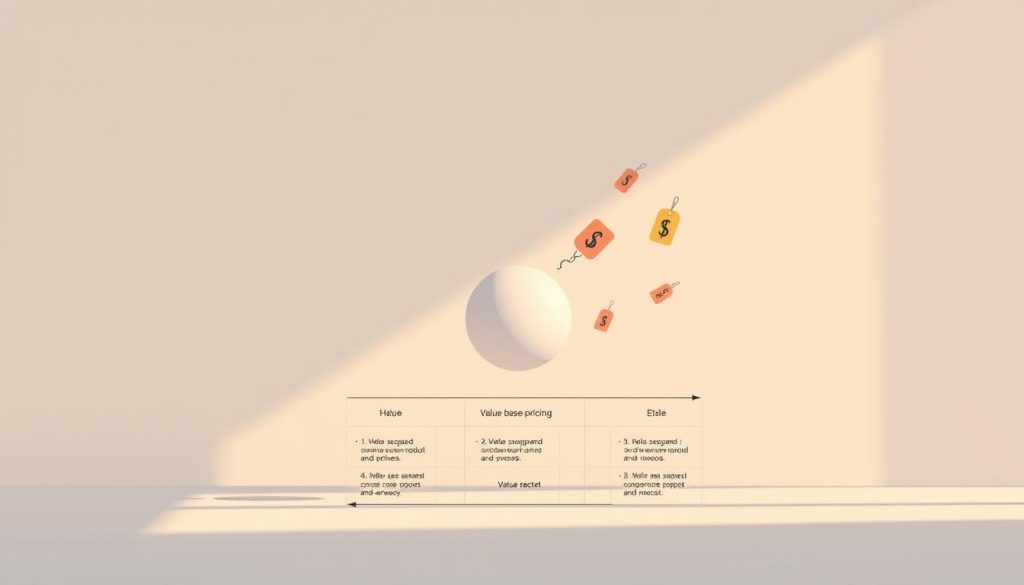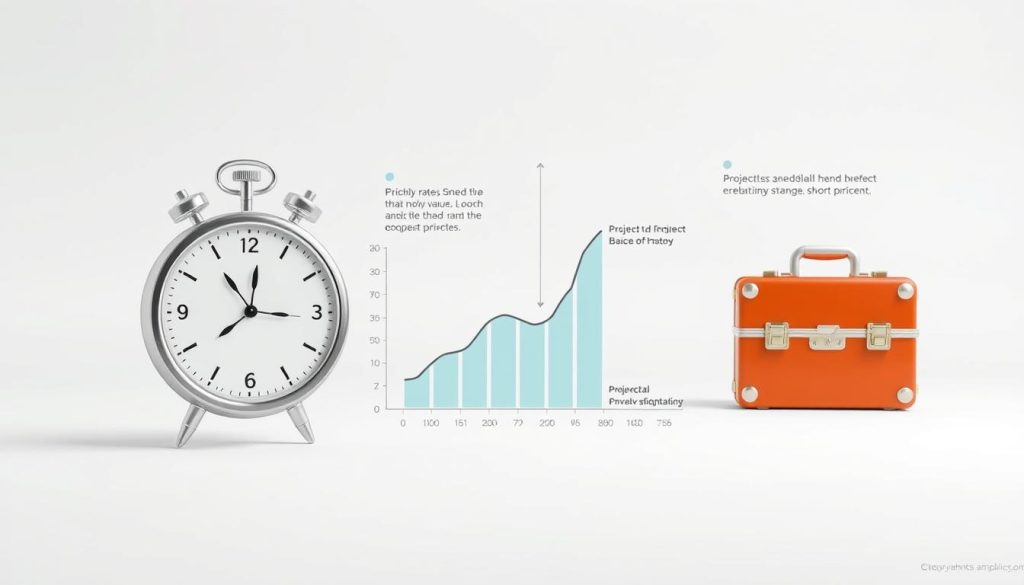Remember the first time you quoted a rate for your services? That mix of excitement and doubt—am I charging enough, or pricing myself out of opportunities? For many independent professionals, this moment defines the delicate balance between valuing your expertise and meeting market realities. It’s not just about numbers; it’s about building a career that sustains both your livelihood and your confidence.
Setting the right rates requires more than basic math. Your skills, industry demand, and client relationships all shape what you should charge versus what you can charge. A well-crafted strategy ensures you attract clients who respect your work while avoiding burnout from underpaid projects. Think of it as creating a blueprint for growth—one that adapts as your experience evolves.
This guide offers a comprehensive framework for pricing strategies, helping you move from uncertainty to clarity. Whether you’re adjusting existing rates or starting fresh, you’ll learn how to align your financial goals with market expectations—without compromising your worth.
Table of Contents
Key Takeaways
- Pricing reflects your expertise and market position, not just costs
- Strategic rate-setting prevents undervaluation and client mismatches
- Long-term success requires balancing profitability with relationship-building
- Regular rate reviews ensure alignment with growing skills and demand
- Transparent pricing builds trust and positions you as a professional partner
Consider a graphic designer who doubled her rates after recognizing her niche expertise. Within months, she attracted clients willing to pay premium prices for specialized skills. This shift didn’t just boost her income—it transformed how prospects perceived her value. Your pricing journey could follow a similar path, turning financial stress into professional empowerment.
Introduction to Freelance Pricing
Every independent professional faces the pivotal question: What is my work truly worth? Your answer shapes not just your income, but your career trajectory and client relationships. Getting it right means sustaining your business without compromising growth opportunities.
Why Strategic Rate Setting Matters
Charging appropriately ensures you cover operational costs while funding skill development. Consider this: 68% of service providers regret their initial rates within six months. Immediate client acceptance often signals undervaluation, while hesitation might indicate misaligned expectations rather than excessive pricing.
Navigating Common Pricing Obstacles
Three core challenges complicate rate decisions:
| Challenge | Impact | Solution Framework |
|---|---|---|
| Skill vs. Experience Gap | Newer professionals undercharge despite advanced capabilities | Portfolio-based validation |
| Technical Uncertainties | Tool failures add 15-30% project time | Contingency pricing buffers |
| Regional Rate Disparities | Global platforms create price competition | Localized value positioning |
Geographic differences starkly affect earnings. A social media manager in France earns 2.3x more than comparable talent in Southeast Asia for identical deliverables. Yet adjusting rates requires understanding both global benchmarks and local living costs.
Technical hiccups—like software crashes or client-side delays—demand flexible pricing structures. Build adaptable terms that protect your time without nickel-and-diming clients. Remember: Your expertise deserves compensation that reflects real-world complexities, not just ideal scenarios.
Freelance Pricing: Core Concepts

Business conversations often stumble when numbers enter too early. Imagine two professionals offering identical services: one leads with cost, the other with measurable outcomes. Which earns trust faster? Value-first discussions transform transactions into partnerships.
Price reflects a transaction. Value defines transformation. Clients pay €X for deliverables but gain Y% revenue growth or Z hours saved. Position your work through this lens:
| Aspect | Price Focus | Value Focus |
|---|---|---|
| Client Perception | Cost center | Strategic investment |
| Conversation Starter | « What’s your budget? » | « What problem needs solving? » |
| Outcome | Price comparisons | ROI calculations |
Scoping projects before quoting prevents misalignment. A web developer who discusses page speed improvements before mentioning fees helps clients visualize returns. This shifts the question from « Why does it cost so much? » to « How soon can we start? »
Transitioning to value requires structure. Begin with discovery questions, outline measurable goals, then present solutions. Our structured approach helps frame discussions around impact rather than hourly rates.
Regional markets like France demand nuance. While global platforms emphasize low-cost options, local clients often prioritize expertise over bargains. Demonstrate how your services solve their specific challenges—not just deliver tasks.
Understanding Value-Based Pricing
What if your expertise became an asset rather than a liability? Traditional hourly models create a paradox: the better you get at your work, the less you earn for faster results. Value-based pricing flips this script, aligning compensation with outcomes rather than time spent.
Benefits Over Hourly Models
Consider racing champions—their speed commands premium fees. Similarly, your efficiency should increase earnings, not reduce them. Hourly billing imposes artificial limits:
- Earning potential capped by available hours
- No reward for process improvements or expertise
- Client focus shifts to time tracking over results
Value-based structures remove these barriers. A marketing consultant might charge 15% of a campaign’s projected revenue boost rather than billing hours. This approach transforms you from a vendor to a strategic partner.
Calculating the Value You Deliver
Start by quantifying client gains. For a website redesign, calculate potential traffic increases and conversion rate improvements. Use this formula:
(Client’s projected revenue lift × 12 months) × 20% = Service fee
Key factors to assess:
- Direct financial impact (sales, cost reductions)
- Intangible benefits (brand authority, customer loyalty)
- Implementation timeline and complexity
Most professionals capture 10-30% of the value they create. Adjust percentages based on project scope and client capacity. This method ensures compensation reflects your true impact—not just hours logged.
Navigating Hourly Rates vs. Project Fees

Two distinct paths emerge when structuring service agreements: charging for time or outcomes. Your choice impacts income predictability, client trust, and project flexibility. Let’s explore how each model aligns with different work scenarios.
Pros and Cons of Hourly Rates
Hourly billing offers simplicity. Multiply time spent by your rate—clients see direct effort-to-cost correlations. This works well for evolving projects where scope shifts frequently. However, efficiency becomes a double-edged sword. Completing tasks faster reduces earnings unless you increase rates regularly.
Clients often counter hourly risks with budget caps. For example, a €2,000 limit ensures predictability. While this protects their finances, it demands accurate time estimates from you. Misjudgments can lead to unpaid overtime or rushed deliverables.
When to Choose a Per Project Approach
Fixed fees thrive in stable environments. A website redesign with defined pages and functionalities suits this model. Clients appreciate cost certainty, while you gain freedom to optimize workflows without financial penalty. However, unclear requirements invite scope creep—sudden changes can erode profits.
Consider these factors when deciding:
- Project duration and revision likelihood
- Client’s preference for cost predictability
- Your capacity to absorb unforeseen complexities
One French UX designer increased earnings 40% by switching to project fees for branding packages. She standardized deliverables while including three revision rounds—balancing client needs with protected margins.
Setting Your Minimum Rate
Imagine building a house without knowing your material costs—that’s what setting rates blindly feels like. Your minimum rate isn’t just about covering bills. It’s the foundation that keeps your entire operation stable when unexpected challenges arise.
Breaking Down Annual Salary Goals
Start with your desired income. Let’s say you aim for €60,000 annually. Divide this by 52 weeks: €1,153 weekly. Now divide by 40 hours—that’s €28.83/hour. But this is just the beginning.
Add 20% for delays or revisions: €34.60. Then include 15% for emails, invoices, and client calls: €39.79/hour. This becomes your non-negotiable floor. As one Paris-based developer notes: « Tracking every minute revealed 30% of my week vanished into admin—rates had to change. »
Covering Overheads and Admin Costs
Software subscriptions, insurance, and equipment upgrades eat into profits. A simple table shows common expenses:
| Expense Type | Monthly Cost | Hourly Impact |
|---|---|---|
| Design Tools | €85 | €0.53 |
| Accounting Software | €45 | €0.28 |
| Workspace | €220 | €1.38 |
Review these costs quarterly. If your business grows, adjust rates to reflect new tools or certifications. Remember: Your time includes prospecting and learning—not just paid projects. Charge accordingly, or risk subsidizing clients with your own income.
Flexible Pricing for Varied Client Needs
One size rarely fits all in professional services. Your ability to adapt rates demonstrates business maturity while accommodating diverse client budgets. Strategic flexibility helps balance income stability with market responsiveness.
Scaling Costs with Scope Demands
Complex projects require layered pricing structures. A basic logo design might take 8 hours, while rebranding campaigns involve stakeholder coordination and multiple revisions. Consider this comparison:
| Service Category | Low Complexity | High Complexity |
|---|---|---|
| Graphic Design | Single logo (€300-600) | Full brand system (€3,500+) |
| Event Planning | Vendor coordination (€75/hour) | End-to-end management (€5,000 flat) |
| Web Development | Landing page (€800) | E-commerce platform (€12,000+) |
Wider price ranges work best for uncertain scopes. If a client requests « some social media help, » propose €500-1,800 instead of fixed figures. This accounts for content volume and strategy depth.
Seasonal demand also impacts rates. During peak periods, position higher quotes for less appealing projects. One Marseille-based copywriter increases rates 25% for technical writing tasks outside her niche—filtering requests while maintaining income.
Transparency prevents misunderstandings. Explain how deliverables expand with budget tiers: « The premium package includes competitor analysis and quarterly performance reviews. » Clients appreciate seeing where their investment goes.
Pricing for Risk and Uncertainty
Every project carries hidden variables that demand financial foresight. While clients see deliverables, professionals navigate shifting timelines and evolving requirements. Strategic rate adjustments become your silent safeguard against unpredictable workloads.
Complex projects often reveal needs during execution—additional training for technophobic stakeholders or extended feedback sessions with chatty collaborators. Build adaptable pricing structures that absorb these variables without renegotiations. A 15-25% risk premium applied during quoting compensates for unknowns while maintaining client trust.
Consider communication patterns during initial consultations. Clients requiring daily check-ins or detailed technical guidance justify higher baseline rates. This approach fairly values your time investment while setting clear boundaries. As industry data shows, 67% of disputes vanish when expectations align through personalized contract templates addressing scope changes.
Three indicators signal needed rate adjustments:
- Vague project outlines requiring discovery work
- Aggressive deadlines compressing workflow
- History of frequent revisions from the client
Your expertise includes anticipating challenges clients overlook. By embedding contingency buffers into proposals, you protect margins while delivering consistent quality. This method rewards problem-solving skills without explicit surcharges—maintaining professionalism while securing fair compensation.
FAQ
How does value-based pricing benefit professionals?
Value-based pricing focuses on the results you deliver rather than hours worked. This approach aligns your compensation with the client’s perceived ROI, often leading to higher earnings while reducing debates over time tracking.
Should I charge hourly or per project?
Hourly rates work for tasks with unclear scope, while project fees suit well-defined deliverables. For example, ongoing consulting often uses hourly billing, whereas website development typically fits fixed-price models. Match your strategy to the job’s predictability.
How do I set a minimum acceptable rate?
Calculate your annual income goal, divide by billable hours (accounting for taxes, admin work, and downtime). Add 15-20% for overheads like software or insurance. Tools like FreshBooks or QuickBooks can automate these calculations.
Can I adjust rates for different clients?
Yes. Tailor pricing to project complexity, client budgets, and strategic value. A startup might receive tiered options, while enterprises often pay premium rates for specialized expertise. Always maintain clear boundaries to avoid scope creep.
How do I handle uncertain projects?
Build risk buffers into your pricing. For projects with shifting requirements, use phased billing or include a 10-20% contingency fee. Platforms like Upwork offer milestone-based payment structures to mitigate financial exposure.
What if clients push back on rates?
Frame costs around solutions, not hours. Highlight past successes through case studies – for instance, « My redesign increased Client X’s conversions by 40%. » Offer payment plans or scaled service tiers to accommodate budget constraints without devaluing your work.





